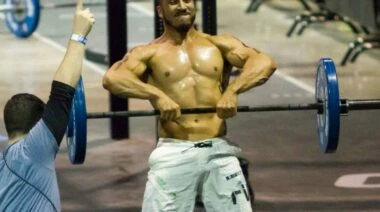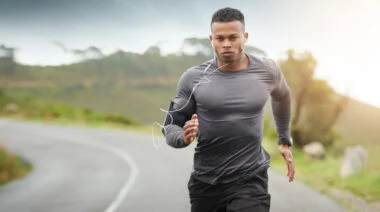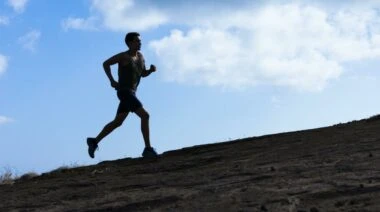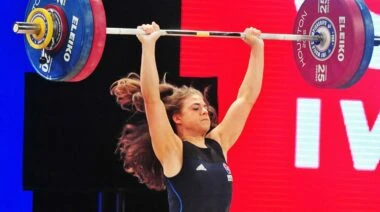Military Training: Beyond Boot Camps and Towards Effective Preparation
Boot camps aim to replicate the rigors of military training, being open to all. However, a crucial question persists: what truly is required to become a part of the British Army (or any nation’s military)? Do boot camps adequately meet the demands placed on potential recruits, and can such training prepare an individual for the military way of life? The answer is a resounding no. There is a fundamental element lacking, not only in boot camps but also in various training methods employed by those aspiring to a military career. Before delving into this missing element, let us first examine the fitness levels necessary for military enlistment.
The Three Elements of Selection
Note: These three requirements pertain specifically to the British Army. It is essential to research the selection process details for your particular military branch.
While running is an integral aspect of Army selection, it is far from the sole training method to be utilized. Potential recruits are subjected to a stringent interview and selection procedure. The initial fitness testing comprises three key elements:
– The Static Lift: This test mimics the action of placing equipment onto the rear of a vehicle at a height of 1.45m. A Powerbag, starting at 15kg, is used to simulate the equipment. The weight is incremented in 5kg steps until 40kg, at which point the test concludes.
– The Jerry Can Carry: This assessment measures the strength of your upper arms, shoulders, and grip. You are tasked with carrying two 20 – kg Jerry cans for a distance of 150 meters. With your arms at your sides and one Jerry can in each hand, you must complete this course in under two minutes, maintaining a pace of no less than 5.4km/h. Scoring is based on the distance covered while sustaining the minimum pace.
– The 2.4km Best Effort Run: Run times vary significantly depending on the Army branch you wish to join. Time benchmarks range from 09:40 for units like the Parachute Regiment to 14:30 for Junior Entry.
Most individuals do not encounter difficulties with the first two elements. The stumbling block, however, is often the 2.4km best – effort run. Second only to the initially awkward experience of standing completely naked in front of a stranger (which becomes routine for military personnel over time), the running component of the selection process is one of the most anxiety – inducing aspects of the two – day interview.
“The underlying cause of failure is that potential recruits simply did not meet the standards. They were either overcome mentally by the pressure or physically by exhaustion or injury.”
I have heard an array of excuses, from “I have a cold” to “I’m missing a sock” (remarkably, this was an actual occurrence). Let us be clear: the fundamental reason for failure is that potential recruits did not measure up. They were either defeated mentally by the pressure or physically by fatigue, exhaustion, or injury.
The required times are not overly demanding, nor do they closely mirror the specificities of a combat environment. This test serves to establish a gender – fair standard that can be easily replicated. It also enables physical training staff to identify those who are truly committed. After all, this is a job interview.
These initial screenings are crucial for setting you up for success in your military career.
Why You Need to Lift
If you are considering a career as a tactical athlete (and these men and women are indeed athletes in their own right), weightlifting is essential. The common stress fracture is the most prevalent injury among young men and women undergoing military training. Stress fractures, small fractures on the tibia, are not only painful but can potentially derail a military career.
“Although I commend those who run over 10km daily, practice the 2.4km run weekly, and engage intensively in local boot camps, they are inadvertently undermining their chances. These individuals are setting themselves up for failure.”
Stress fractures typically result from inadequate preparation. Although most recruits have some running experience prior to training, they are unaccustomed to the volume. They lack knowledge of how to approach training correctly, minimizing the risk of injury while maximizing physical performance.
I have witnessed numerous individuals who, despite their daily 10 – km runs, weekly 2.4 – km run practice, and intense boot – camp training, ultimately fail. They come to me for rehabilitation, sitting in front of me, scared and tearful, bewildered as to how they developed a searing pain in their shin. Surely, their extensive pre – recruit selection and training running did not significantly contribute to their downfall?
Running is a repetitive plyometric exercise. In later military training, additional load will be added to this movement. Thus, efficiency must be established before enlistment. To enhance efficiency and reduce the risk of injury, we must strengthen our musculoskeletal system.
How You Need to Lift
The movement I consistently recommend to my clients is the simple back squat. This exercise not only enhances the muscle strength of the lower limbs but also benefits the skeletal system. By applying what is known as the minimal essential strain (one – tenth of the force required to fracture a bone) to the lower limb musculature, we can stimulate new bone formation throughout the lower limbs. This, combined with the associated hypertrophic benefits that increase bone mineral density, can reduce the risk of stress fractures and optimize your chances of completing training.
“The squat is also directly related to the motion of running. One screening tool for safely assessing plyometric capability is the ability to squat 1.5 times your body weight for 1 repetition and perform 5 repetitions in 5 seconds at 60 percent of your body weight.” These are the same criteria I use when rehabilitating a patient following a tibial stress fracture.
Soldiers engage in early – morning physical training (PT) in the Jordanian desert.
Exercise Prescriptions
When preparing for the 2.4km run, less is often more. Combining the squat and its associated markers with a well – structured anaerobic training program will not only improve your prospects of becoming a soldier but also reduce the risk of injury during the process.
Training in a more anaerobic manner not only shortens training sessions but also yields greater benefits, such as an increase in VO2 max and enhanced fatigue resistance. Additionally, you will have a more favorable physique due to increased muscle mass and decreased fat.
Linear sprint work has been effectively used as an anaerobic method in the rehabilitation context. This allows us to push soldiers hard without the repetitive impact on the lower limbs, while providing adequate rest periods.
This plan has demonstrated proven results, even for the arduous Parachute Regiment selection cadre:
– Back Squat:
– Perform 5 sets of 4 repetitions at 80% of your current 1 – Repetition Maximum (1RM).
– Apply a linear progression of 2.5 – 5kg on a weekly basis to ensure safe adaptation.
– Sprint Work:
– Conduct sprint work using a combination of modalities, including track, rower, and bike.
– Perform 200m x 12, totaling 2.4km, which directly corresponds to the 2.4km test.
– Use a work – rest ratio of 1:1. For example, if you cover 200m in 40 seconds, rest for 40 seconds before repeating.
– Sprint sessions can be flexible. You can vary the distance while maintaining the same total distance, e.g., 400m x 6, with a 1:1 rest ratio.
The above sessions can be carried out 3 times a week, with a 1RM squat test and a 2.4km run test conducted every 8 weeks.
I have achieved proven results using this plan, including for the demanding Parachute Regiment selection cadre.
Set Yourself Up for Success
In conclusion, failing Army fitness tests is relatively easy, regardless of your country of residence. The training methods I have discussed, which are used not only by tactical athletes but also by major sporting clubs worldwide, elevate your training to a superior level. These methods test you not only physically but also mentally.
Remember, you are training to safeguard your life and the lives of others in combat. Do not be the individual who compromises the patrol or, worse still, who cannot participate in patrols due to an avoidable injury.
Further Reading:
- How to Construct an Effective Tactical Training Program
- Basic Training Breakdown: What to Expect When You Join the Military
- Military Special Operations: Do You Have the Mental Fortitude to Make It?
- New on Breaking Muscle Today
References:
- Baechle, T., Earle, R. (2008). Essentials of strength and conditioning. 3rd ed. Champaign: Human Kinetics. Pp94 – 119.
Photo Credits:
- Photo 1 by MoD/MOD via Wikimedia Commons.
- Photo 2 by Photo: Lt Col John Skliros/MOD via Wikimedia Commons.
- Photo 3 by Photo: Sgt Mike Fletcher/MOD via Wikimedia Commons.
- Photo 4 courtesy of Shutterstock.









